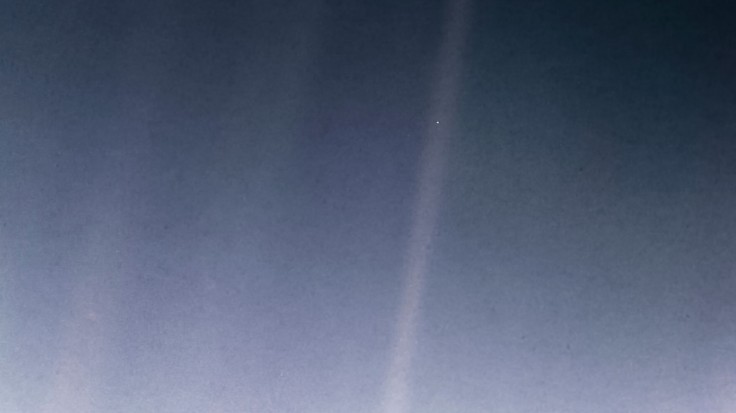Voyager 1 and its sister spacecraft, Voyager 2, are the spacecraft that managed to go where no spacecraft had ever reached in the history of space exploration.
Though its nuclear batteries are still keeping the two spacecraft working, it is only a matter of time before we have to say goodbye to these legendary spacecraft.
To remember their service to humanity, let's take a look at one of the last pictures Voyager 1 took before it became too far for humanity to reach.
Here's what you probably didn't know about the Pale Blue Dot:

The Picture Almost Didn't Exist
Believe it or not, humanity wasn't supposed to have the "Pale Blue Dot" photo in the first place. The Voyager team didn't plan to take the photo as part of the original Voyager mission, turning down several requests to take pictures from the Voyager Imaging Team, led by prominent planetary scientist Carl Sagan.
According to NASA, the team had to turn Sagan's team down due to limited engineering resources and the potential danger the cameras would be exposed to due to them being pointed close to the sun.
Voyager 1 took the photo that was to be the Pale Blue Dot 3.7 billion miles from the sun on Feb. 14, 1990. However, without the protection of an atmosphere, pointing Voyager 1's cameras near the sun could cause the cameras to malfunction, preventing it from taking other pictures as clearly as before.
However, after eight years and six requests, the Voyager team ultimately gave the green light for the picture.
Voyager 1 Got Lucky With The Picture

Despite getting the go-ahead for the shot, the photo almost didn't look like it does now. The Voyager Imaging team intended to show Earth's vulnerability and show the world that it only occupies a small space in the universe by taking a picture of Earth a as pale blue dot against the vastness of space.
The team also wanted to show the planet's fragility and irreplaceability through the photo - something that the sunbeams in the photo highlighted by pointing Voyager 1's camera within a few degrees of the sun.
However, this sunbeam, a camera artifact, was almost never caught on film due to Voyager 1's distance from the sun at the time. It just so happened that one of the sun's rays of light intersected with Earth, further illuminating our home planet and highlighting its location at the time.
It Was Carl Sagan's Dream Shot
If the photo had an author, it would be Sagan, who thought of taking the picture in 1981 following the mission's encounters with Saturn.
When he saw the picture, he became inspired by it and use the title "Pale Blue Dot: A Vision of the Human Future in Space," for his book, in which he wrote, "Look again at that dot. That's here. That's home. That's us."
Needless to say, the Pale Blue Dot photo was Sagan's dream shot.
It Took Two Months To Download The Image
The photo took quite some time to be taken and sent to Earth. The Voyager Imaging Team had to warm the spacecraft's camera for about three hours on Feb. 13 to take the picture. After which, its onboard tape recorder saved all the images taken for later playback on Earth.
However, it is this playback that had the Voyager Imaging Team biting their nails in excitement. Due to the spacecraft's distance from Earth at the time, it took the picture two whole months for NASA to download the entire photo, with the last of the image data taken for the Pale Blue Dot arriving on Earth on May 1, 1990.
It Is One Of The Last Pictures Voyager 1 Took
Thanks to its distance from Earth at the time, the Pale Blue Dot is one of the last pictures Voyager 1 ever took, with the other being the equally famous picture that would be known as "The Family Portait," a picture from Voyager 1 that included every planet in the solar system.
After taking the family portrait, Voyager 1 powered down its cameras for the final time. Though the spacecraft is still operational, it no longer can take images due to its three nuclear batteries lacking the power to bring its cameras back to life, per Business Insider.
Related Article : NASA's Voyager 1 Spacecraft Is Having Issues and Nobody Knows Why









